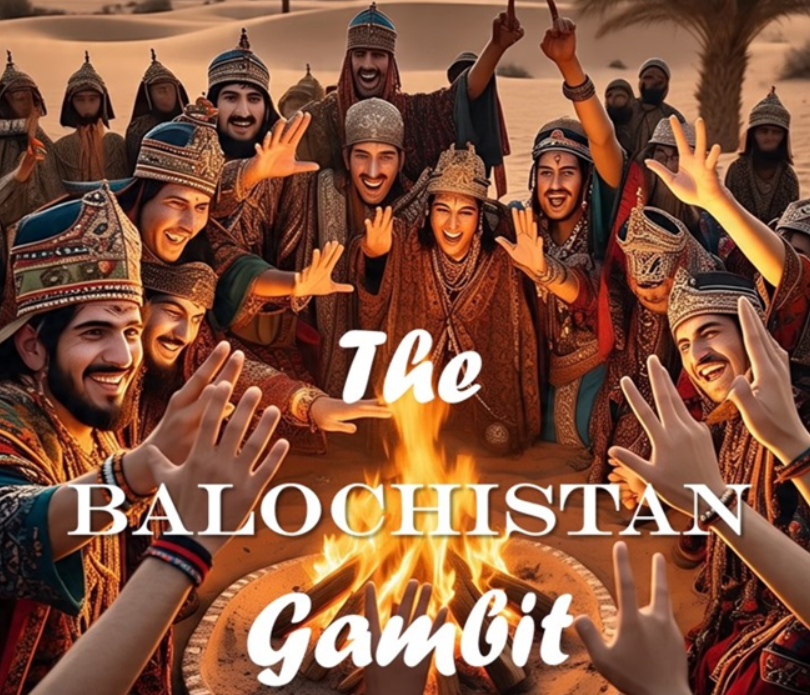
What if half of Pakistan disappeared overnight? Balochistan’s shocking independence declaration puts $1 trillion in resources, China’s maritime strategy, and India’s regional dominance on the table. This isn’t just news—it’s the geopolitical earthquake that could redraw South Asia’s map forever. Your world is about to change. Read the complete story for further details.
From Gwadar to Gone: How China’s $62 Billion Dream Became India’s Strategic Jackpot
On May 9, 2025, as Mir Yar Baloch’s voice echoed across the airwaves declaring Balochistan’s independence from Pakistan, the tectonic plates of South Asian geopolitics shifted beneath our feet. In New Delhi’s power corridors, this wasn’t just another separatist proclamation—it was the opening of a door long considered sealed by the architects of the post-colonial order.
The Republic of Balochistan—a name that now reverberates with both promise and peril—stands as either a mirage in the desert or the harbinger of a new regional reality. For India, the question isn’t merely whether to acknowledge this declaration, but whether to seize a once-in-a-generation strategic opportunity that has fallen into its lap like a ripe fruit.
The Treasure Beneath the Wounds
Balochistan bleeds, yet it glitters. This paradox defines the land that constitutes nearly half of Pakistan’s territory while holding just 5% of its population—a land systematically stripped of its wealth while its people remain shackled to poverty.
The numbers are staggering: mineral reserves valued at $1 trillion; the Reko Diq copper-gold deposit worth over $500 billion; potential oil reserves of 6 trillion barrels; and 19 trillion cubic feet of natural gas. The Sui gas field alone has fueled Pakistan’s economy since 1953, providing 35% of the country’s natural gas, while Baloch villages nearby remain in darkness.
This isn’t mere economic inequality—it’s colonial exploitation wearing the thin disguise of federalism. As a Baloch elder told me during a clandestine 2023 interview: “They take our gold and give us graves in return.” With poverty rates exceeding 70%, the Baloch people have watched their birthright extracted through the barrel of a gun.
For India, this presents both moral imperative and strategic opportunity. A resource-rich, independent Balochistan aligned with New Delhi would fundamentally alter the economic calculus of the region while addressing a historical injustice.
THE BALOCHISTAN STRATEGIC CALCULATOR
The Prize at Stake
| Territory: | 347,190 km² (44% of Pakistan’s landmass) |
| Mineral Wealth: | $1 trillion in reserves |
| Reko Diq Deposit: | $500 billion copper-gold mine |
| Energy Resources: | 6 trillion barrels oil potential, 19 TCF natural gas |
| Sui Gas Field: | Provides 35% of Pakistan’s natural gas since 1953 |
Gwadar: The Pearl That Could Change Hands
Stand at Gwadar’s deepwater port and you can almost see the changing tides of history. Just 400 kilometers from the Strait of Hormuz—the maritime chokepoint through which one-fifth of the world’s oil supply passes—Gwadar represents China’s multibillion-dollar bet on reshaping regional power dynamics.
This is no ordinary infrastructure project. The $62 billion China-Pakistan Economic Corridor (CPEC) terminates at Gwadar for a reason: it gives Beijing what strategists call “strategic redundancy”—an alternative to the vulnerable Malacca Strait through which 80% of China’s energy imports currently flow. More ominously for India, it establishes a permanent Chinese naval presence in what Delhi has long considered its maritime backyard.
An independent Balochistan could shatter this carefully constructed strategy overnight. The question is whether India will recognize this opportunity for what it is: a chance to neutralize China’s “String of Pearls” strategy with a single diplomatic stroke.
The Annexation That History Forgot
Few remember that Balochistan’s incorporation into Pakistan wasn’t inevitable—it was enforced. On August 15, 1947, as India celebrated its independence, the Khan of Kalat declared Balochistan a sovereign state. The Baloch parliament formalized this with a clear resolution: relations with Pakistan would be friendly, not subordinate.
Seven months later, Pakistani troops marched into Kalat. The Khan resisted but ultimately capitulated under pressure. The bitter irony? Muhammad Ali Jinnah, who ordered the occupation, had previously served as the Khan’s legal advisor, arguing for Balochistan’s right to independence.
This forgotten chapter of history provides more than academic interest—it offers legitimacy to Baloch independence claims that Pakistan’s narrative on Kashmir can never match. Where Pakistan claims Kashmir against the documented accession to India, Balochistan can point to documented independence before forced annexation.
For India, supporting Balochistan independence isn’t merely strategic opportunism—it’s championing a cause with historical legitimacy.
The Balance Sheet of Destiny
Let’s be brutally honest about what’s at stake. For India, an independent Balochistan offers a strategic windfall almost too good to believe: Pakistan reduced by half in size; its economy gutted by resource loss; a friendly state on Pakistan’s western flank ending India’s strategic encirclement; direct access to Afghanistan and Central Asia without Pakistani interference; and China’s maritime ambitions severely constrained.
But great opportunities carry great risks. Supporting Balochistan means potential military confrontation with a nuclear-armed Pakistan that has staked its identity on territorial integrity. It means potentially setting a precedent for separatist movements within India’s own borders. It means navigating complex international reactions from powers with their own stakes in regional stability.
As former Indian National Security Advisor Shivshankar Menon once noted in a closed-door briefing: “In geopolitics, opportunity and catastrophe are often two sides of the same coin.”
The Great Game Reborn
Make no mistake—Balochistan’s declaration has already set in motion a new “Great Game” among world powers.
For the United States, an independent Balochistan offers leverage against both China and Iran simultaneously—a strategic twofer rarely available in foreign policy. Russia sees both opportunity in weakening China’s position and danger in legitimizing separatism. The Gulf states, particularly Saudi Arabia, eye a potential Sunni buffer state against Iranian influence.
And China? Beijing views Balochistan’s independence as nothing short of catastrophic—a multibillion-dollar investment suddenly at risk, its carefully constructed Indian Ocean strategy in tatters. China will mobilize every diplomatic, economic, and covert tool at its disposal to ensure this declaration remains just that—a declaration without recognition.
India stands at the crossroads of this geopolitical whirlwind with unique leverage. Its voice on Balochistan’s legitimacy carries moral weight and practical consequence that few other nations can match.
The Path of Calculated Boldness
India’s approach thus far has been characterized by strategic ambiguity—expressing concern about human rights violations in Balochistan without explicitly endorsing independence. This caution has served its purpose, but history rarely rewards perpetual hesitation.
The wiser course now lies in what might be called “calculated boldness”—incrementally increasing support for Balochistan’s aspirations while carefully monitoring international reactions and Pakistani responses. This means highlighting the legitimate historical basis for Balochistan’s independence claim, providing humanitarian support to Baloch refugees, and engaging with Baloch leaders without immediately extending formal recognition.
Such an approach acknowledges the risks while refusing to surrender the initiative. It recognizes that in geopolitics, as in chess, the player who controls the center of the board controls the game.
The Moment of Decision
As the dust settles on Balochistan’s declaration, India faces its most consequential strategic decision since 1971. The question is not whether India has interest in Balochistan’s independence—it unquestionably does—but whether it possesses the strategic vision and diplomatic dexterity to transform interest into advantage.
The Balochistan gambit represents not just a challenge to the status quo but a test of India’s readiness to shape, rather than merely respond to, the emerging regional order. How New Delhi plays this hand will reveal much about its capacity to move from regional power to global player.
The clock is ticking. The great powers are moving their pieces. And in the mountains and deserts of Balochistan, a people await the world’s judgment on their bid for freedom. For India, this is more than a diplomatic question—it’s a date with destiny.


